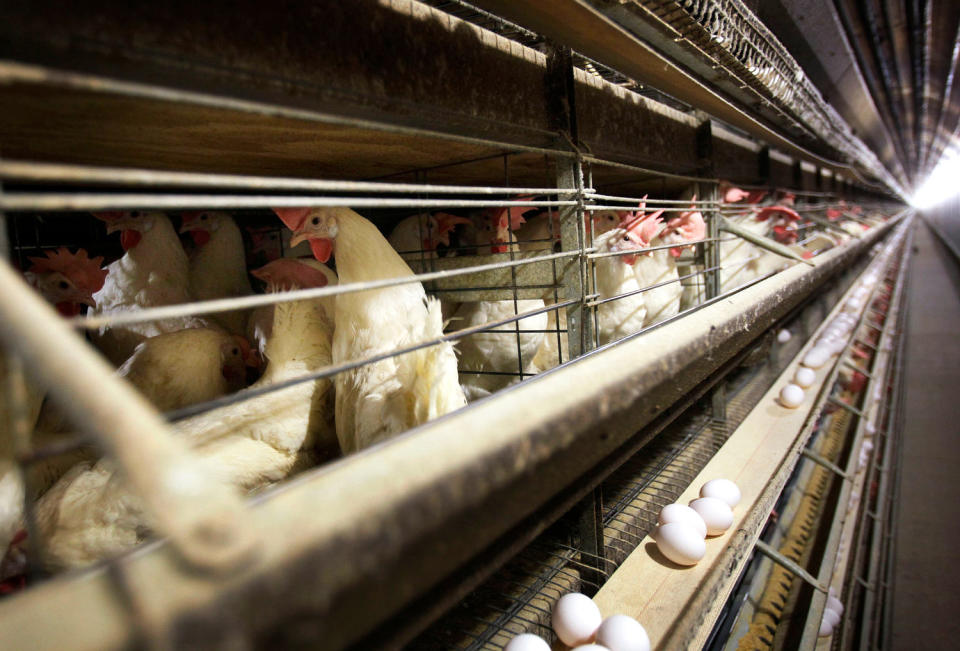Is there a new strain of bird flu to worry about?
On Wednesday, the World Health Organization reported the first confirmed human case of the H5N2 type of bird flu in a 59-year-old man in Mexico who died in April.
The case adds to the growing concern about the risk of bird flu spreading among humans, particularly as the man had no history of exposure to birds or other animals, according to the WHO.
The strain is different from the outbreak of the bird flu virus, known as H5N1, which is circulating among dairy herds in the United States and caused mild infection among three farm workers.
What is H5N2?
H5N2 is just one of several types of bird flu virus. Is it a significant health risk to people?
Exposure to the H5 virus in Mexico is not surprising, said Dr. Troy Sutton, assistant professor of veterinary and biomedical sciences at Penn State. H5 viruses have been circulating among poultry and wild birds in Mexico since the mid-1990s. However, unlike other strains of bird flu that cause outbreaks in humans — such as H1 and H3 viruses — H5 viruses rarely infect humans.

Viruses are classified based on two types of protein on their surfaces: hemagglutinin, or H, which plays a critical role in allowing the virus to infect cells, and neuraminidase, or N, which helps the virus spread. Many different combinations of H and N proteins are possible.
H5N2 belongs to a family of bird flu viruses known as H5, which mainly infect wild birds. There are a total of nine known subtypes of H5 viruses, according to the Centers for Disease Control and Prevention.
H5N1, which was found in dairy cows in the United States in March, also belongs to this family. It is commonly associated with highly contagious strains of H5 viruses known as the “Guangdong Goose Line” that have caused multiple outbreaks in poultry over the past 20 years and sporadic infections in humans, Sutton said.
H5N1 has infected people in 23 countries since 1997, according to the CDC, resulting in severe pneumonia and death in about 50% of cases.
“They are a distinct lineage with a distinct history and sort of a distinct story of the disease they cause,” Sutton said of the H5N2 and H5N1 viruses.
Should people be concerned?
The patient in Mexico had been bedridden for several weeks before symptoms developed.
According to WHO, on April 17, the man developed fever, nausea, diarrhea, shortness of breath and general malaise. A week later, on April 24, he was hospitalized and died that day.
Sutton said it is important to note that the man had multiple underlying medical conditions, which made his infection worse.
“Maybe the person was already sick enough,” Sutton said. “That changes the calculation a bit more than, say, a healthy farm worker being infected.”
The WHO said no other cases were reported during its investigation. Of the 17 contacts identified and monitored at the hospital where the patient died, one reported a runny nose.
However, experts still do not know how the man managed to become infected with the virus, as he was not exposed to poultry or other animals. If someone else had infected him, this suggests that there may be additional undiagnosed cases.
“It’s a concern that someone is infected with a new subtype of virus,” Sutton said.
Dr. Michael Osterholm, an infectious disease expert at the University of Minnesota, that human-to-human transmission is unlikely. “They probably picked it up from the same place.”
Data show that the H5N2 virus that infected the man is a low pathogenic virus, meaning it is unlikely to cause serious illness, Osterholm said.
“There is a high path and a low path, and there are certain genetic changes in the high path. It makes it more likely to have a serious illness,” said Osterholm. “And the low, easily transmitted pathway can often infect any number of animal species with little or no symptoms.”
What scientists want to know
Dr. Paul Offit, an infectious disease expert and director of the Vaccine Education Center at the Children’s Hospital of Philadelphia, said the main question among experts is whether the H5N2 has mutated in some way that made it easier to spread to people.
H5 viruses, in general, he said, struggle to infect humans because the cell receptors they target in birds are much different than our receptors.
That’s why, he said, people often become infected with H5 viruses through direct contact with birds and poultry, not other people.
H5N1, which has evolved to cause frequent infections in humans, has not caused widespread person-to-person transmission, he said.
“The fact that it’s H5N2, as opposed to H5N1, I don’t think it’s meaningful in terms of representing something that’s more likely to be pandemic-related,” Offit said. “If the virus is not able to reproduce itself well in the upper respiratory tract, it will not be able to spread easily from person to person.”
Sutton said scientists still need to do more genetic sequencing of the H5N2 virus that infected the Mexican man before they can determine whether it poses a risk to humans.
“Until we have that information, it’s really hard to draw a lot of conclusions.”
Osterholm said the H5N1 is the one we need to be “laser focused” on.
The H5N1 virus has emerged from dairy cows in the US, infecting at least 84 herds across nine states, according to the US Department of Agriculture, raising the possibility that it could acquire mutations that allow it to spill into humans.
This article was originally published on NBCNews.com